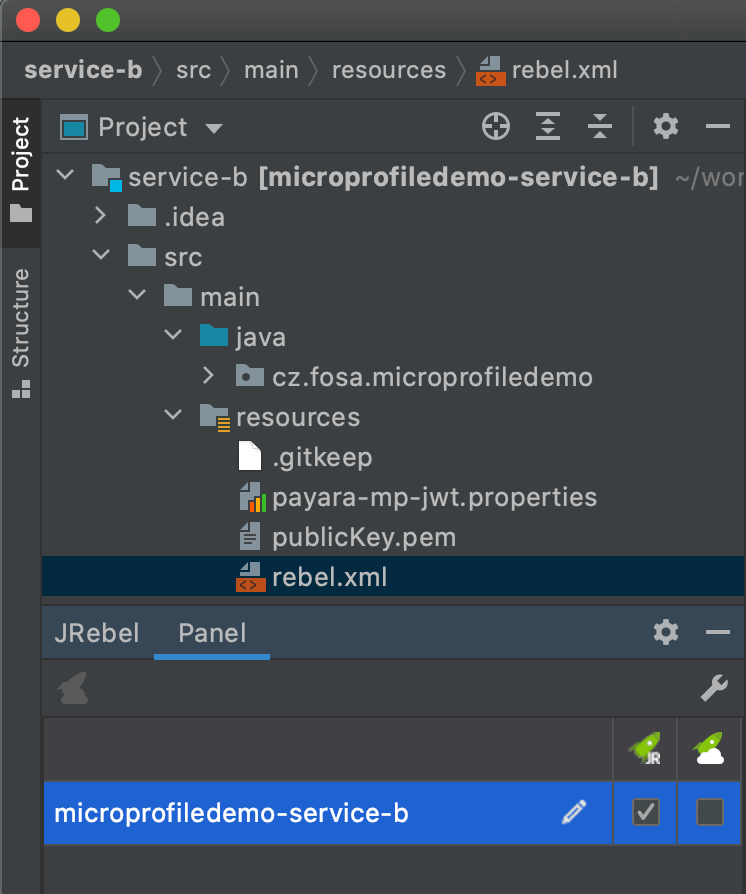

The JVM TI has been designed to make the JVM as transparent as possible while still maintaining the design flexibility to allow JVM vendors to provide different underlying implementations.
Detect jrebel agent code#
This spans across a wide field of areas, including GC, locking, code manipulation, synchronization, thread management, compilation debugging and much more. This set of APIs exposed by jvmti.h enables a C++ library dynamically loaded by the JVM to obtain an extremely high level of visibility into the real-time working of the JVM. Not only that, they’re provided with an extremely powerful set of capabilities called the JVM Tooling Interface (JVMTI). Native agents are not written in Java, but mostly in C++, and are not subjected to the rules and restrictions under which normal Java code operates. If you thought Java agents can let you do cool things, hold onto your socks, because native agents operate on a whole different level. Native agents are completely different beasts. It’s so popular, that it’s in fact used by some of Sun’s internal code to parse bytecode in Java. It’s one of the most popular libraries for bytecode manipulation, that can be used to modify existing classes or dynamically generate classes, directly in binary form. ASM is a popular library for this, that offers an all purpose Java bytecode manipulation and analysis framework. That library enables them to load an existing class’s bytecode into a DOM-like structure, modify it by adding things like profiling calls, and then save the DOM back to raw bytecode. For this, agents usually use a library for reading and writing bytecode. Unfortunately, generating correct bytecode at runtime isn’t very simple – there are a lot of requirements and edge-cases. This requires that the agent be able to provide the JVM with new bytecode that is verifiable (i.e. How it’s doneįor an agent to modify the code or a loaded class it essentially triggers a process of a class reload by the JVM, where the class’s bytecode is replaced with a new version. Another example would be to reload a new version of a class without restarting the JVM, as done by JRebel. endtime – starttime) or record parameters values (e.g. Some examples include adding calls to specific methods to profile performance (e.g. This process, known as bytecode instrumentation, enables the agent to essentially rewrite the contents of a method while the code is running. The most powerful capability given to the agent is the ability to dynamically rewrite the contents of a target class’ method at run-time class (field structures are immutable). public static void premain(String agentArgs, Instrumentation inst) What they do By holding on to this object the agent’s code (which otherwise behaves as any Java code loaded by the root class loader) can do some really powerful things.

The magical part comes in with the Instrumentation object, which is passed as an argument to this function by the host JVM. jar files that define a special premain static function which will be invoked by the JVM before the application’s main function is invoked. While both are loaded into JVM in almost the same manner (using a special JVM startup argument), they’re almost completely different in how they’re built and what they’re meant to do.

The Play framework uses a Java agent to enable hot-swapping of classes at run-time.JRebel took it to the next level by building a technology that provides smooth hot-swapping of classes at runtime without requiring JVM restarts.This includes both standalone or hosted services such as NewRelic or YourKit Profilers use a Java agent to modify target framework’s code to inject new code that collects performance metrics.To get a sense of how fundamental these are, let’s look at just a few of the tools we use that rely on them: Agents are OS native or Java libraries (we’ll describe the differences below) to which the JVM provides capabilities that aren’t available to normal application code. Many of them are built on one of the most powerful ways in which external code can integrate with the JVM at runtime – Java agents. A new breed of tools has evolved to help Java and Scala developers do just that.
Detect jrebel agent update#
When building a scalable server-side application, we spend a considerable amount of time thinking about how we’ll monitor, operate and update our code in production. What you should know before installing an agent, and how it affects your code


 0 kommentar(er)
0 kommentar(er)
